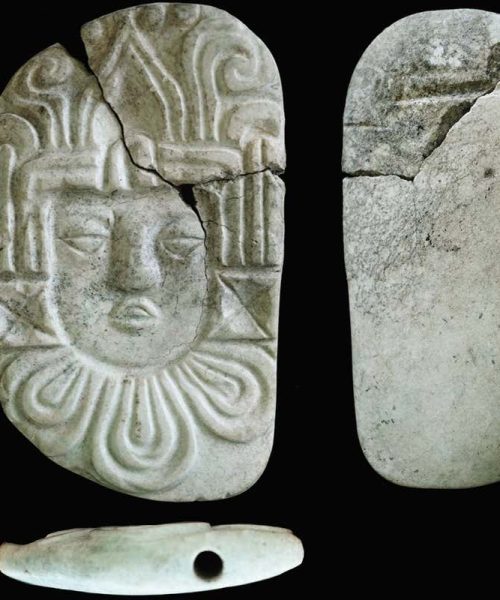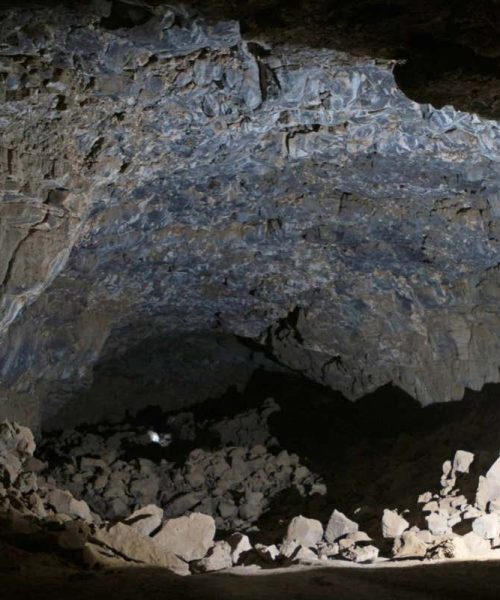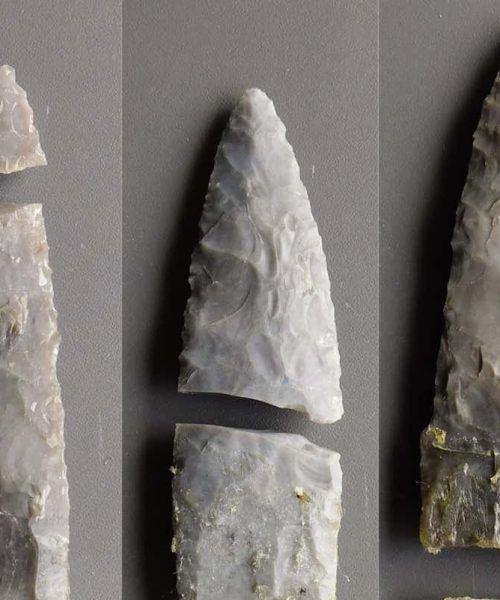A site in France briefly occupied by modern humans is littered with stone points that were probably used as arrowheads, showing that bows and arrows were used in Europe much earlier than we thought

Reproductions of arrows with flint heads like those found at Grotte Mandrin in France
Ludovic Slimak
Bows and arrows were first used in Europe much earlier than we previously thought. More than 100 arrowheads have been found in a rock shelter briefly used by a group of modern humans 54,000 years ago in an early foray into Neanderthal territory.
“It’s incredible how many we have,” says Laure Metz at Aix-Marseille University in France.
Metz is part of a team that has been excavating a rock shelter called Grotte Mandrin in southern France. This shelter was used first by Neanderthals more than 80,000 years ago, and then by modern humans from about 45,000 years ago – around the time that modern humans displaced Neanderthals all across Europe.
Advertisement
But, last year, the team reported that, for a 40-year period around 54,000 years ago, Grotte Mandrin was used as a hunting camp by a small group of modern humans. The clinching evidence came from a baby tooth that isn’t Neanderthal.
In the layers of earth from this time, Metz and her colleagues have now reported finding more than a thousand small stone points around 1 or 2 centimetres long. Of these, around 100 have been identified as broken or complete arrowheads, as they have one or more signs of impact damage resembling those seen when the team used newly made stone points as arrowheads. The others may be arrowheads too, but the researchers are unsure.
“The tips from Mandrin could hardly have been used in any other way than to tip arrows,” says Marlize Lombard at the University of Johannesburg in South Africa, who wasn’t involved in the study.
Most of the Mandrin arrowheads are broken. Some are arrowhead tips that broke off inside animals and were brought back to camp inside butchered meat, says Metz. Many of these show signs of charring from fires.
The parts that remained attached to the shaft have also been found. Because of the work involved in making arrow shafts, says Metz, when an arrowhead broke, hunters would have brought the arrow back to camp and replaced the arrowhead, discarding the broken one.
Before now, the earliest unambiguous evidence for bows and arrows in Europe came from finds in Stellmoor, Germany, dating to around 10,000 years ago, says Metz. However, it was considered likely that the modern humans who displaced Neanderthals around 45,000 years ago had bows and arrows.
These humans were definitely using stone-tipped projectiles; the issue is that, with larger stone points, there is no way to tell if they were spearheads or arrowheads, says Metz. At some prehistoric sites in Europe, evidence of arrowheads may have been missed – archaeologists used to throw away smaller bits of stone, she says, regarding them as having no value.
Bows and arrows were first developed in Africa at least 70,000 years ago. Lombard and others have found stone and bone arrowheads at several sites in southern Africa dating back as far as this. The modern humans who moved out of Africa may have spread the technology around the world.
Despite presumably seeing bows in action, Neanderthals never developed them, says Metz. They kept using large, stone-tipped spears that were either thrust directly or thrown by hand, and so required close contact with their prey.
The team has found no evidence that the arrows were used in conflict, but Metz says warfare is so ubiquitous in human societies that she is convinced it took place in prehistory too. She says that, while it is possible that this small group of modern humans was wiped out by Neanderthals despite having technological advantages such as bows and arrows, we just don’t know what happened to them. “We have no idea,” she says.
Sign up to Our Human Story, a free monthly newsletter on the revolution in archaeology and human evolution
More on these topics:





